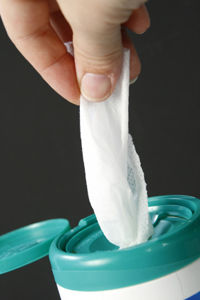
What’s next in sustainability at RISE conference
According to a new Freedonia industry study, ‘World Nonwovens Industry', global sales of nonwoven fabrics are forecast to increase 6.9% annually through 2015 to 9.2 million metric tons. Â The growth rate is said to be an acceleration from the 2005-2010 period, reflecting a low base as global recessionary conditions restrained nonwovens fabric demand in 2008 and 2009 before improving somewhat in 2010. World Nonwovens Industry presents historical demand data (2000,

3rd January 2012
Innovation in Textiles
|
Cleveland, OH
 According to a new Freedonia industry study, ‘World Nonwovens Industry', global sales of nonwoven fabrics are forecast to increase 6.9% annually through 2015 to 9.2 million metric tons. The growth rate is said to be an acceleration from the 2005-2010 period, reflecting a low base as global recessionary conditions restrained nonwovens fabric demand in 2008 and 2009 before improving somewhat in 2010.
According to a new Freedonia industry study, ‘World Nonwovens Industry', global sales of nonwoven fabrics are forecast to increase 6.9% annually through 2015 to 9.2 million metric tons. The growth rate is said to be an acceleration from the 2005-2010 period, reflecting a low base as global recessionary conditions restrained nonwovens fabric demand in 2008 and 2009 before improving somewhat in 2010.
World Nonwovens Industry presents historical demand data (2000, 2005, 2010) plus forecasts for 2015 and 2020 by web formation process, market, application, world region and for 19 countries. The study also assesses market environment factors, evaluates company market share and profiles global players.
The report says that continued growth in global manufacturing and construction activity, as well as gains in personal income will promote demand. Product sales are expected to grow faster in area terms, rising 7.3% per year to 198 billion square meters, reflecting a modest decrease in average nonwovens weight.
According to the study, this will be due primarily to increased demand in developing areas for a variety of lighter weight disposable nonwoven products, supported by manufacturers' efforts to make them more affordable and technological advances that are making new generations of nonwoven fabrics lighter. In value terms, sales of nonwovens will expand slower because of a decline in average prices, the report says.
Spunmelt nonwoven fabrics, which passed carded fabrics to account for the single largest share of total demand in 2010, will also post above-average gains through 2015, driven by growth in the use of disposable medical garments and textiles, rising consumption of composite spunbonded/meltblown nonwoven fabrics that combine the performance advantages of each, and greater penetration of markets now served by competitive products.
However, the reports says demand for airlaid nonwovens is projected to achieve the most rapid growth through the forecast period. Airlaid products are generally less expensive than competitive materials, and suppliers will benefit from increased use in a variety of disposable products.
The personal hygiene market, which includes adult incontinence products, feminine hygiene products, and infant diapers and training pants, will continue to account for the single largest share of nonwovens demand in 2015. Use of these goods will expand the fastest in developing areas, fuelled by growth in the number of women working outside the home and higher standards of living, the study claims.
According to World Nonwovens Industry, the construction and filtration product markets for nonwoven fabrics will record the most rapid gains through 2015, promoted by accelerating construction expenditures and an increase in manufacturing activity. The medical/surgical product market for nonwoven fabrics (excluding medical wipes) is also predicted to record above-average advances, spurred by an aging world population, continued growth in health care spending, and improved infection prevention safeguards.
Market gains in developing parts of Asia/ Pacific, Eastern Europe, Africa/Mideast and Latin America will outpace demand in the US, Western Europe and Japan, the reports says. Product sales in developing areas will be fuelled by above-average economic growth, ongoing industrialization efforts and rising living standards.
China alone will account for just over half of additional global volume demand through 2015. Advances are also expected to be healthy in lower-volume markets such as India and Brazil. Sales of roll goods in developed parts of the world will expand as well. Nonwovens demand in Western Europe will recover from a reduced 2010 base, stimulated by improved economic climates, manufacturing output and consumer spending.

Business intelligence for the fibre, textiles and apparel industries: technologies, innovations, markets, investments, trade policy, sourcing, strategy...
Find out more